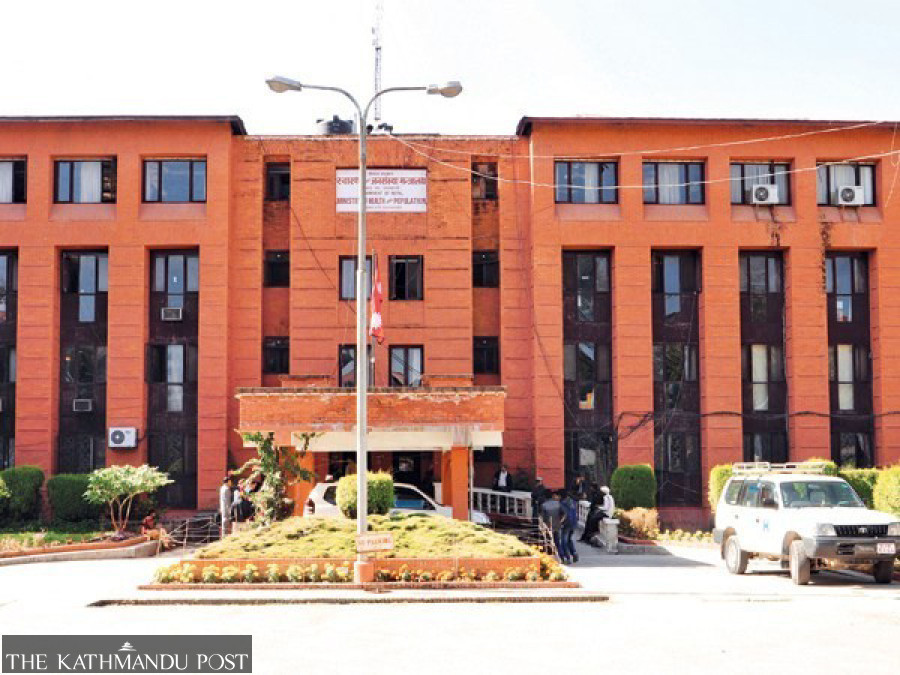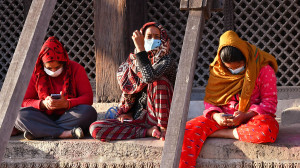Money
Health sector gets Rs95.81 billion
As the sector’s liabilities are high, 0.3 percent increment of the health budget won’t be enough to meet Sustainable Development Goals.
Post Report
The government has allocated Rs95.81 billion for the health sector for the upcoming fiscal year.
The amount is Rs9.57 billion more than the allocation for the current fiscal year and around Rs13 billion over the ceiling set during budget preparation.
The allocation is around 4.9 percent (0.3 percent up from last year’s 4.6 percent) of the total budget. In the current fiscal year, Rs86.24 billion was allocated to the health sector.
Funds have been allocated to give continuity to most of the ongoing programmes—safe motherhood, free essential medicines, setting up basic health care centres in all wards across the country, and financial relief to people from difficult and expensive diseases—cardiovascular disease, cancer, renal failure, Alzheimer’s disease, Parkinson’s disease, head and spinal injury, sickle cell anaemia, and stroke.
To provide quality treatment for burn victims, funds have been allocated to set up a special burn department in each state-run hospital in every province while an intensive care unit will be expanded in Bir Hospital for burn victims.
The health budget also includes grants to Tribhuvan University Teaching Hospital, Nepal Police Hospital, Nepal Army Hospital, Civil Hospital, and others.
The budget for the health insurance programme has been increased to Rs10 billion. However, payment dues to the hospitals already cross Rs16 billion, while Rs24 billion is needed for a year. This means increased funds for health insurance programmes will not be enough to reimburse the health facilities providing such programmes.
As liabilities of healthcare sectors are rising every year and the deadline of the Sustainable Development Goals approaching, the allocated budget will not help start new health care programmes, according to officials at the Ministry of Health and Population.
SDGs, a follow-up to the Millennium Development Goals (MDGs), aim to end poverty and hunger and all forms of inequality in the world by 2030, and Nepal has committed to meeting the goals.
Moreover, many international aid agencies including the USAID have suspended their fundings, and the rising price of the dollar has increased the burden on the Ministry of Health and Population.
“We [ministers and other health ministry officials] tried a lot to convince the finance minister to increase the health budget,” said Dr Bikas Devkota, secretary at the health ministry. “Compared to our growing liabilities, the total health budget has increased only slightly.”
Of late, non-communicable diseases—such as heart disease, stroke, cancer, diabetes, and chronic lung disease—have emerged as major public health problems, accounting for 71 percent of deaths in the country.
Likewise, Nepal has witnessed several outbreaks in recent years—dengue, cholera diarrheal diseases, and other vector-borne diseases. The country has failed to achieve several targets including malaria, measles and other elimination targets.
Experts say the allocated budget will not be sufficient to address several emerging as well as existing challenges. They say most of the health budget will be spent on the salaries of the staffers.
“I can’t state the exact figure of investment needed to achieve the SDGs and to deal with all existing and emerging challenges, but huge resources are required,” said Dr Senendra Upreti, former health Secretary. “Even to sustain the achievements made in the health sectors made over the years, we need to substantially increase the budget.”
The government has to shoulder additional burden, as several health care programmes supported by the aid agencies including the USAID have been suspended. The country has already been feeling the impact, and officials say they are bracing for further consequences.




 9.12°C Kathmandu
9.12°C Kathmandu












%20(1).jpg&w=300&height=200)
